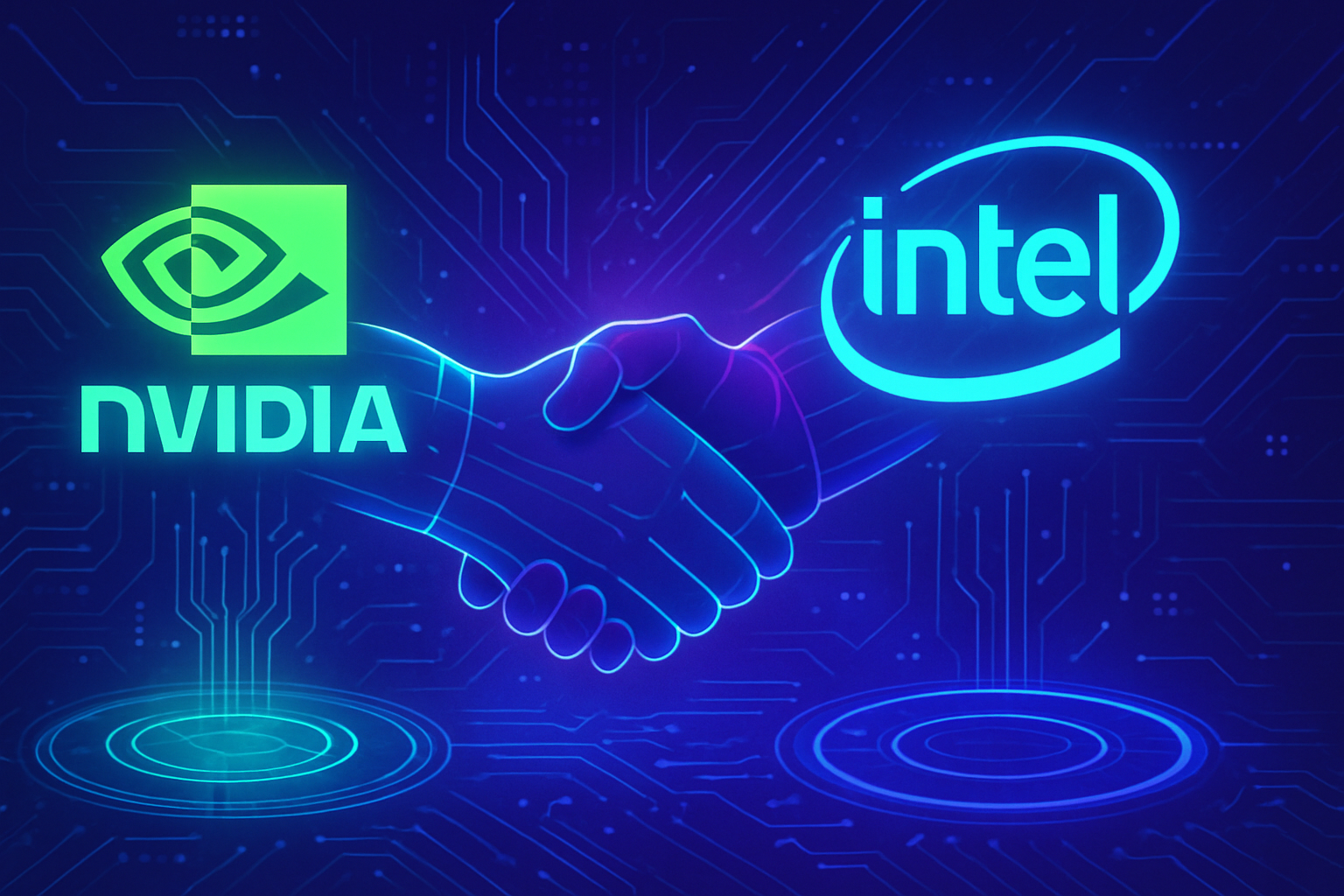Nvidia commits to revitalizing Intel. A financial windfall of 5 billion dollars represents a thunderbolt in the tech industry. This strategic partnership certifies the merger of talents and skills, combining performance with innovation.
In response to the growing challenges of data centers and PCs, this bold alliance transforms existing competitive dynamics. The impact of this collaboration is set to be monumental, redefining industry standards.
Nvidia and Intel: An Unexpected Collaboration
Nvidia recently announced a significant investment of 5 billion dollars in Intel, its iconic rival. This decision marks a strategic turning point in the semiconductor industry. The joint development of chips for PCs and data centers will meet the growing needs of the tech market.
Impact on the Semiconductor Market
This partnership injects new dynamics into the sector, often marked by aggressive competition between these two giants. With the exponential demand for advanced technologies, the collaboration could promote innovation while addressing the growing appetite for superior performance in the fields of artificial intelligence and machine learning.
Product Developments
Nvidia plans to effectively collaborate on a series of new products, focusing on creating high-performance supercomputers. This project coincides with Nvidia’s ambitions to strengthen its position against players like Amazon Web Services, which is set to launch competing solutions.
Market and Analyst Reactions
Analysts express some optimism regarding this initiative. The merging of talents and resources between Nvidia and Intel could give rise to innovative solutions. Many believe that this alliance will enable new technological advancements and a better response to competitive threats.
Geopolitical Consequences
This partnership cannot be dissociated from the current geopolitical context, notably the rivalry with China. The collaboration between these two American companies represents a direct response to technological challenges and a desire to maintain a strategic advantage in critical markets such as AI.
The Numbers Speak for Themselves
Nvidia, with its dominant position in the graphics processing unit market, and Intel, a historical player in microprocessors, are trying to capitalize on their respective strengths. The envisioned synergy could not only enhance their competitiveness but also transform the global technological landscape.
Future Outlook
The implications of this investment go far beyond simple financial figures. The promise of increased innovation could reshape the future of personal computing and data infrastructures. Industry observers eagerly await future developments and products that may emerge from this fruitful collaboration.
Frequently Asked Questions
What are the reasons Nvidia is investing 5 billion dollars in Intel?
Nvidia aims to strengthen its position in the PC chip and data center markets while supporting its competitor Intel during a period of financial difficulty.
How will this investment from Nvidia affect competition in the semiconductor market?
This collaboration could potentially reduce rivalry between the two companies, thereby fostering innovation and improving products for consumers.
What types of products will be co-developed through this agreement between Nvidia and Intel?
The two companies will primarily work on personal computer chips and data center processing solutions.
What impact will this agreement have on Intel and Nvidia customers?
Customers can expect improved product performance, with compatible and optimized technologies that better meet their needs.
Are there any implications for Intel employees due to Nvidia’s investment?
Though details are not yet clear, a significant investment could offer new job and training opportunities for Intel employees.
Could this alliance change the dynamics of the computer chip market?
Yes, it could redefine relationships among major industry players, prompting other companies to consider similar collaborations to remain competitive.
What are the risks associated with this investment for Nvidia?
Risks include the potential intensification of competition and the challenge of managing resources while integrating a struggling competitor.






